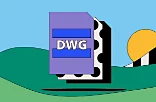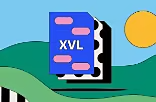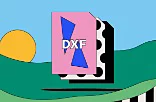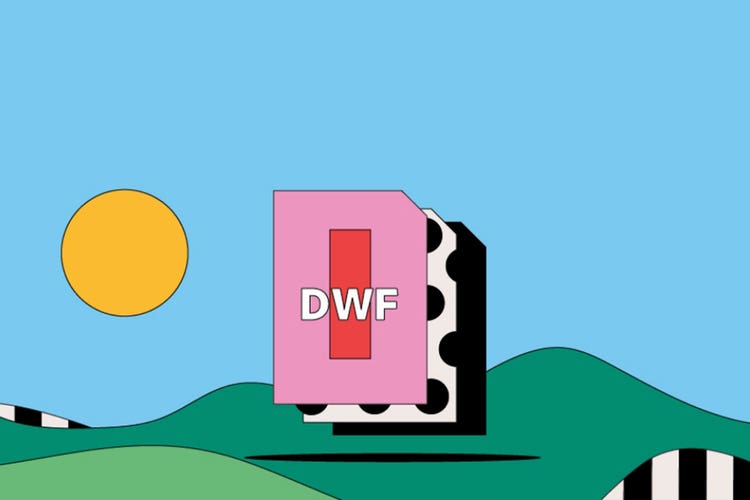DXF files.
DXF is a CAD data file format designed for sharing drawing data universally across CAD applications. You can also use it in text-based formats. Discover how to create a DXF file — and learn about its pros, cons and uses.
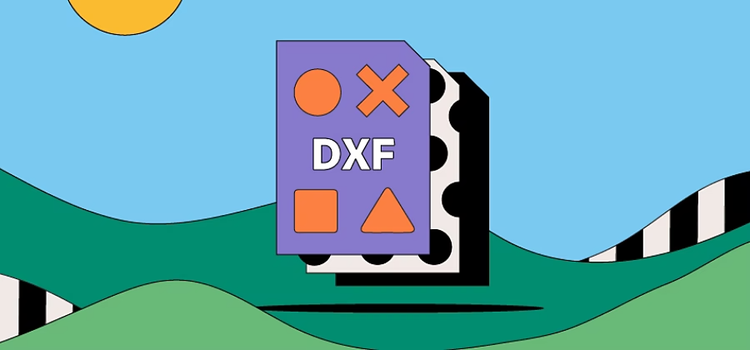
What is a DXF file?
DXF is short for Drawing Exchange Format or Drawing Interchange Format and is a type of vector file. Engineers, designers and architects often use the DXF format for 2D and 3D drawings during product design.
Several 3D applications support DXF format, but it is most often used to share designs across different CAD programmes.
DXF files, which use the .DXF extension, are completely open-source This makes them different to other file formats used in CAD file sharing — such as DWG files.
History of the DXF file.
Launched in 1982 to enable designers to share drawings across CAD applications, the concept was a great success and DXF quickly became the go-to format for exchanging designs.
Developers designed DXF so users could exchange files from other programmes.
A popular file format for almost half a century, DXFs precede mainstream file types such as GIFs and JPEGs — and came long before Google’s WebPs.
What are DXF files used for?
DXF files are free to use and ideal for collaborating on product designs. Their main uses include:
Sharing designs.
When working on a project, the DXF format allows collaborators across different disciplines to work together on the same design. For example, a draughtsman and an architect using separate CAD applications can share their progress in one DXF file..
Precision.
DXF is also used for its accuracy. When scaled, the quality of vector files doesn’t reduce like a raster file would. Whether they’ve been converted or not, using DXF files for CNC machining or printing almost guarantees a precise outcome. However, you cannot print DXF files 3D, so you’ll need to convert them to STL format first.
Pros and cons of DXF files.
Discover the many advantages and disadvantages of DXF files before committing to using this format.
Advantages of DXF files.
- DXF is open format, so anyone can access DXF files.
- Regardless of the different CAD programmes collaborators use, everyone can work together on the same version of a design using a DXF file.
- You can scale a DXF file with precision — it has up to a 16-bit floating-point which delivers an impressive scale of detail.
Disadvantages of DXF files.
- While DXF files are generally small, they store information as plain text, which can the slow down the transfer of your design or model.
- Application-specific CAD elements aren’t supported in the DXF format. For example, the file won’t recognise if you are working with dynamic blocks.
- While you can work with 3D elements in DXF, it only fully supports 2D objects.
How to open a DXF file.
When opening a DXF file, you’ll have the option of converting it to another file type such as a PDF, DWG, or SVG.
If you stick to the DXF format, there are free file viewers available. pps such as Adobe Illustrator are also available for use on both Windows and Mac computers.
How to create and edit a DXF file.
Follow these simple steps to create DXF files in Adobe Illustrator:
- Load up Adobe Illustrator and select Open.
- Choose and click the drawing you’re converting to DXF.
- Click Open then select File and Export.
- In the dialogue box, click the drop-down menu, then Save as Type.
- Select AutoCAD Interchange File (*.DXF) and click Save.
To edit your new DXF file:
- Open Adobe Illustrator.
- Drag and drop your DXF file into Illustrator.
- Click Original File Size on the Artwork Scale pop-up.
- The file will open and you’re free to edit.
DXF files: frequently asked questions.
How do I download DXF files?
Which files can I convert to DXF?
Is a DXF file 2D or 3D?
Is a DXF a vector file?
Can I convert a DXF file to a PDF?
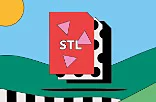
Discover more about this file format which shops information about models — used for 3D printing.
